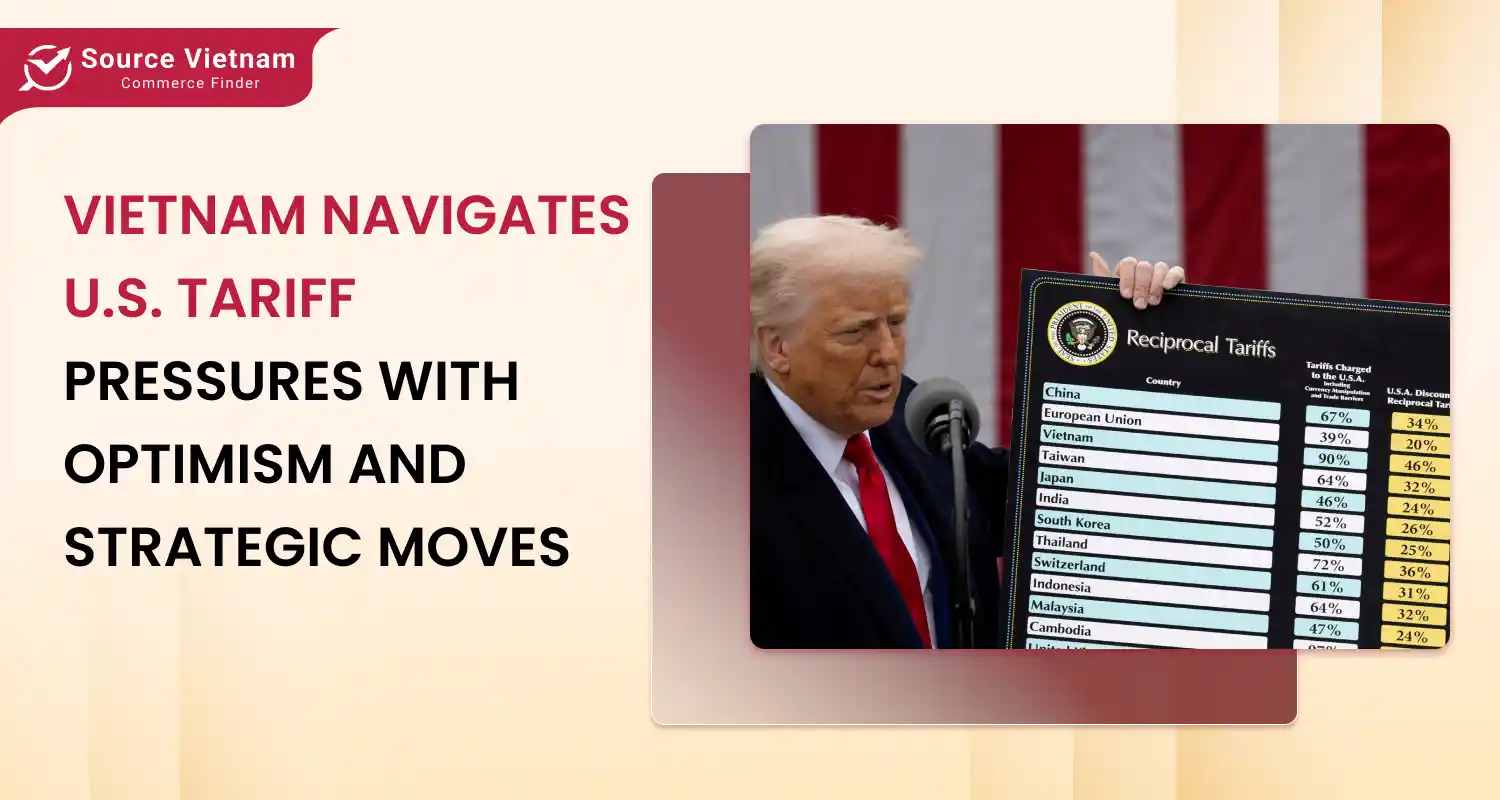Vietnam finds itself at a pivotal crossroads in global trade, facing mounting pressure from the United States over potential anti-dumping tariffs as high as 46% on a range of exported goods. Yet amid the tension, Vietnamese leaders and businesses are expressing cautious optimism, crafting a multi-pronged strategy to safeguard economic growth, stabilize trade relations, and accelerate innovation.

U.S tariff threats: A new test for resilience
The recent announcement that the U.S. Department of Commerce is considering steep tariffs on Vietnamese products, particularly in sectors such as plywood, steel, and textiles, which has sparked concern among Vietnamese exporters. However, Vietnam’s response has been proactive rather than defensive.
“We are maintaining close dialogue with U.s trade partners and leveraging our strong record of compliance with international trade regulations, “said Đỗ Ngọc Hưng, Vietnam’s Trade Counselor in the U.S. He highlighted ongoing discussions with major U.S. Retailers like Walmart, Home Depot, and Costco, have reaffirmed their commitment to sourcing from Vietnam.
Rather than retreating, Vietnam is doubling down on diplomacy. The upcoming “Ho Chi Minh City Export Forum & Global Supply Chain Connectivity” scheduled for September 2025 is expected to host American retail giants alongside hundreds of Vietnamese manufacturers. This event signals Vietnam’s intent to remain a central node in global supply chains despite geopolitical frictions.
PM Chính’s growth commitment: A bold target
Prime Minister Phạm Minh Chính has set an ambitious economic target: at least 8% GDP growth for 2025. Speaking at a national economic forum, he stressed that Vietnam would not allow external pressures to derail its development momentum. “We aim to foster a resilient, inclusive, and dynamic economy that adapts swiftly to global changes,” he stated.
His administration has accelerated internal reforms in customs procedures, digital governance, and logistics to reduce friction for exporters. These policy changes are not only a response to the current tariff challenges but also part of a long-term vision to elevate Vietnam’s competitiveness in the region.
Diversifying beyond the U.S. market
A key pillar of Vietnam’s response is export diversification. While the U.S. remains a crucial trade partner—accounting for roughly 29% of Vietnam’s export value in 2024—the government is actively cultivating new markets.
One standout case is Chile, where Vietnam has become the 12th-largest goods supplier, with exports exceeding $1.4 billion last year. Latin America, the Middle East, and emerging markets in Africa are being targeted through trade missions, diplomatic outreach, and favorable bilateral agreements.
According to Deputy Minister of Industry and Trade Đỗ Thắng Hải, “The goal is to build a multi-market export ecosystem that minimizes vulnerability to any single country’s policy shifts.”
Driving domestic consumption as a growth engine
While exports are essential, Vietnam is also focusing on stimulating domestic demand. Retail and service revenue in Q1 2025 reached over 1.7 quadrillion VND (approximately $65 billion USD), representing a 9.9% year-on-year increase.
This uptick has been bolstered by government incentives, including a VAT reduction and digital payment adoption programs targeting rural populations. Vietnamese consumers are showing increased confidence, particularly in homegrown brands, digital services, and sustainable goods.
This dual approach—strengthening both external and internal demand—places Vietnam in a unique position to weather global economic turbulence while fostering inclusive growth.
Innovation, technology, and value-added exports
Another major thrust of Vietnam’s strategy is technological upgrading and innovation. The government is encouraging manufacturers to move up the value chain, shifting from raw materials and assembly to high-tech, branded, and value-added products.
To that end, Vietnam is scaling support for research and development, industry clusters, and startup incubators. The country’s burgeoning fintech, AI, and green tech sectors are drawing foreign investment and helping reposition the economy for the Fourth Industrial Revolution.
A new $300 million National Innovation Hub, currently under construction in Hanoi, is slated to become a central ecosystem for R&D and startup acceleration by 2026.
Sustainability and global trade integration
Vietnam’s trade strategy also aligns with its environmental goals and its commitments under new-generation Free Trade Agreements (FTAs), including the CPTPP, EVFTA, and RCEP. These agreements provide Vietnam with tariff-free access to dozens of markets, while simultaneously demanding higher standards in labor rights, environmental sustainability, and product quality.
Investments in renewable energy, smart agriculture, and circular economy models are gaining traction—especially among export-oriented businesses aiming to meet EU and North American sustainability requirements.
Looking ahead: A nation poised to adapt
While the potential for steep U.S. tariffs remain a serious challenge, Vietnam is not standing still. It is mobilizing diplomacy, diversifying markets, investing in innovation, and building domestic resilience.
The message from Hanoi is clear: Vietnam is open for business and ready to adapt, grow, and lead.